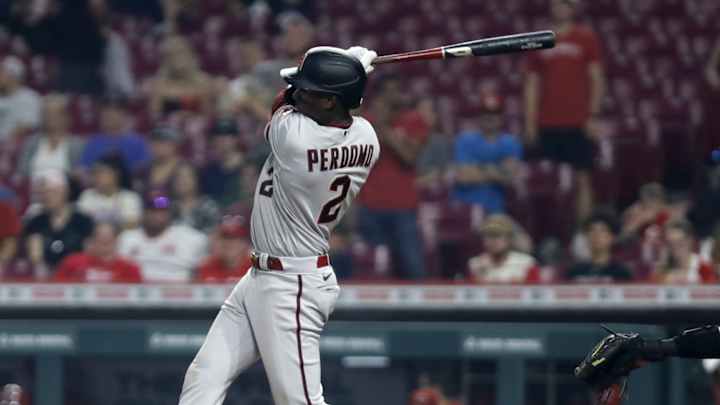Diamondbacks Among Best Clutch Hitting Teams in MLB

In this story:
The Diamondbacks offense ranks just 19th in on base percentage, 29th in walks, and 24th in home runs. Yet they rank 10th in MLB in runs scored (4.81 per game), and 15th in slugging percentage. How are they doing this, and is it sustainable?
The gap between OBP and walks rank is simple enough to explain. Their team batting average is .261 which is the fifth best in MLB. And the gap between their home run rank and the slugging percentage ranks is explained by both the aforementioned batting average and the fact that their 57 doubles ranks 5th in MLB. We'll come back to the doubles in a minute.
But there is something else happening, and it accounts for a major percentage of what some might call overproducing on the part of the D-backs offense. That would be clutch hitting. In virtually every major category that defines hitting when it matters most, the Diamondbacks are excelling. The statistics in the table below come from Baseball-reference.com batting split pages.
Most are familiar with batting average with runners in scoring position as that statistic is frequently quoted on broadcasts and included in box scores. Batting average is used most often because a runner on second can often score on a single.
Late and close is defined as "Plate Appearances in the seventh or later with the batting team tied, ahead by one, or the tying run at least on deck." OPS is best used for this because taking walks and hitting for power mean more in these situations than batting average. Leverage is a little more complicated and is based on a metric called Leverage Index. The leverage of situations is measured by run expectancy models. You can read more about that here if you're so inclined.
The Diamondbacks are excelling in each of these measures relative to the league and their own performance. On some level this may seem unsustainable, and in fact performance in these situations relative to one's own performance baseline will tend to regress. One should avoid creating a narrative of a player or a team having a "clutch gene", but there are certain characteristics that can lend towards better performance in these areas.
Being able to put the ball in play and not strike out is one of them. Not only is the D-backs .261 season batting average well above average, but their team strikeout total of 201 is the third lowest in MLB and their 20.3% strikeout rate is the fourth lowest. Once they get in runners in scoring position situations, they become even tougher to strike out. Their 15.8% strikeout rate with RISP is the lowest in MLB, as is their two out RISP K rate of 16.1%. Similarly, their strikeout rate in high leverage situations is the fifth lowest in MLB, and in the 7th inning or later it's the 3rd lowest.
The other piece of this puzzle is the D-backs base running. While the stolen base totals have ebbed somewhat since the first two weeks of the season, they continue to wreak havoc on the bases, putting pressure on defenses. Remember the 57 doubles mentioned above? Many of those are "hustle doubles" with fast runners like Corbin Carroll stretching a single into two bases. At the same time the D-backs extra bases taken percentage of 59% not only leads MLB, but the next highest team is at just 51% and the league average is 42%. The threat of the stolen base, taking extra bases, stretching singles into doubles not only has the direct effect of increasing run scoring, but also pushes the defense into mistakes.
I'll leave off with two tables below so you can see who has been excelling the most in these situations. There will be plenty of ebb and flow during the season. You should expect the most extreme outliers to move towards the center. And always keep in mind these are very small sample sizes. That means these stats are not predictive of the future. But they help explain what's been happening so far. Geraldo Perdomo does deserve some special mention however as he continues to excel in these situations as he did last year. That's an interesting trend to watch and see if it continues.
In the meantime remember that young teams tend to get better, so it's very possible that the team's ranks in walks and OBP and home runs, which are still the engines of offense, will improve and the team becomes less reliant on "clutch hit" going forward.

Jack Sommers is a credentialed beat writer for Arizona Diamondbacks ON SI. He's also the co-host of the Snakes Territory Podcast and Youtube channel. Formerly a baseball operations department analyst for the D-backs, Jack also covered the team for MLB.com, The Associated Press, and SB Nation. Follow Jack on Twitter @shoewizard59
Follow shoewizard59